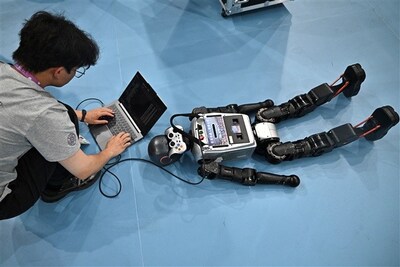
TAIPEI, Sept. 22, 2025 /PRNewswire/ — Nvidia’s framing of the next AI wave as “physical AI” has fueled investor and industry excitement around humanoid robots, accelerating development. But according to a DIGITIMES report, 2025: The first year of humanoid robots — Global market trends and key technologies, humanoids will represent only 0.2% of the global robotics market in 2025, with usage largely confined to logistics, warehousing, and manufacturing. Broader adoption remains a distant prospect.
AI models shorten development time but high costs hinder large-scale adoption
AI has accelerated humanoid robot development, but turning virtual prototypes into physical machines remains challenging. Key hurdles such as bipedal balance and grip calibration remain costly to solve, with no guarantee of reliable performance.
AI modeling enables developers to refine designs virtually, cutting trial-and-error costs while improving perception and decision-making functions. This capability has drawn more companies into humanoid research and development.
Yet smooth virtual performance does not ensure success in real-world production or deployment.
The biggest barrier is cost. Advanced perception requires more chips and sensors, while precise motion depends on specialized motors and mechanical parts — components that are expensive and produced in low volumes.
Humanoids currently cost between US$50,000 and US$400,000 each, compared to less than US$30,000 for industrial robots of similar size. Without economies of scale, prices remain prohibitive for service and household markets.
Three factors will shape humanoid development across three stages
DIGITIMES identifies three forces shaping humanoid adoption: AI progress, hardware costs, and the implementation of safety standards. Over the next three to five years, AI will improve performance, but high costs will keep deployment limited to logistics, warehousing, and industrial uses.
Five to ten years out, more mature AI and cheaper hardware could unlock economies of scale, opening opportunities for service-sector adoption. But humanoids in public environments will face unpredictable interactions, elevating the importance of safety regulations.
Mass entry into households will occur only when AI, hardware affordability, and safety standards converge — a milestone DIGITIMES expects to take more than a decade.
Moving forward, humanoids are poised to play a central role in the physical AI era. The key questions are when, where, and how the breakthrough will happen. In the near term, progress depends heavily on hardware innovation and cost reductions.
View original content to download multimedia:https://www.prnewswire.com/news-releases/digitimes-asia-research-insights-humanoid-robots-are-coming-but-hardware-may-decide-how-fast-302562639.html
SOURCE DIGITIMES ASIA







